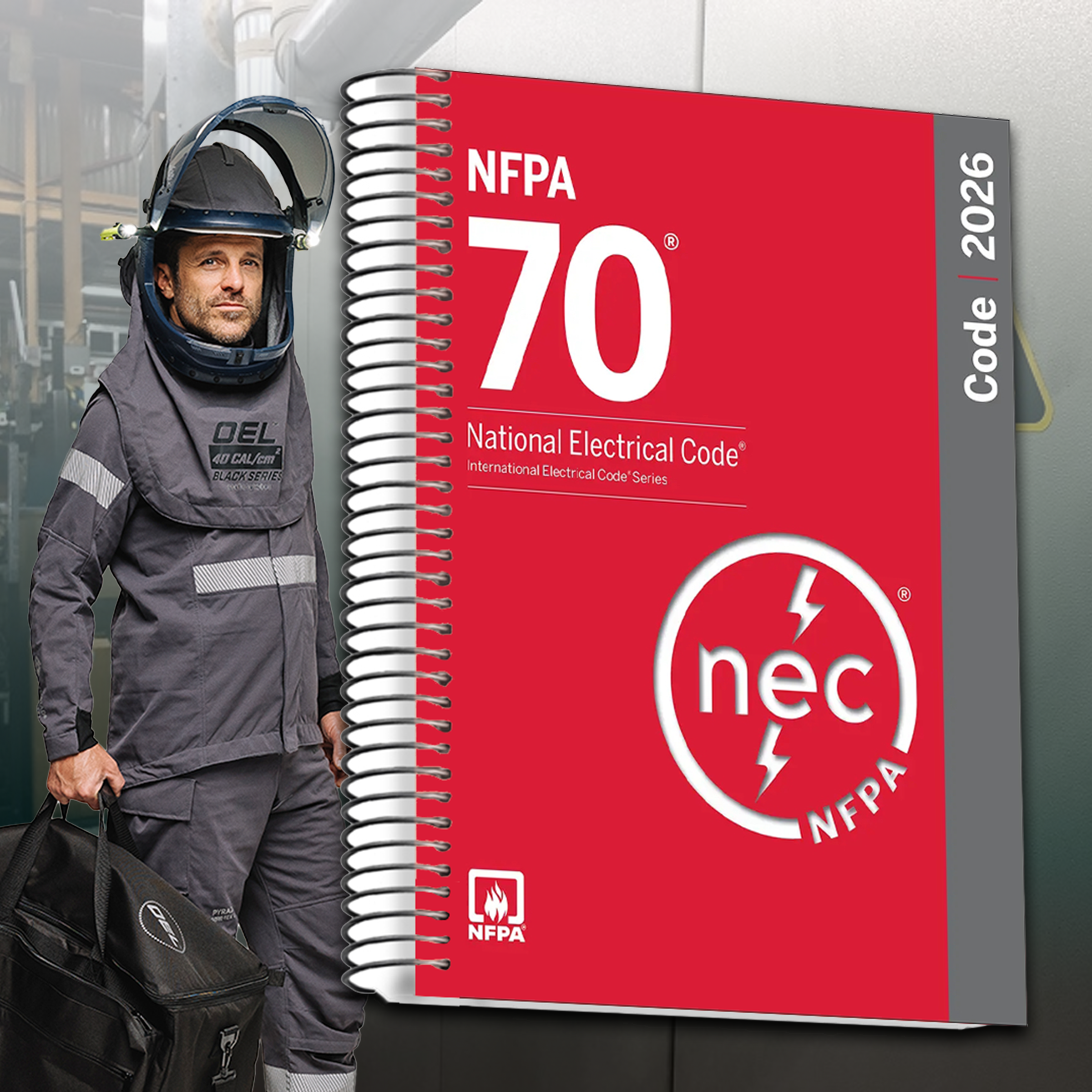“IT’S A GAME CHANGER”-Corey Hannahs 2026 NEC, NFPA 70
2026 NEC (National Electrical Code), NFPA 70
Introduction
In the world of electrical safety, change is coming. The National Electrical Code (NEC) 2026 edition is poised to redefine how arc-flash hazards are managed, labeled and enforced. A recent video from the National Fire Protection Association (NFPA) underscores the urgency: if your site hasn’t had an arc-flash hazard assessment recently, now is the time to act.
What’s New in NEC 2026
The heart of the update lies in Section 110.16 (retitled “Arc-Flash Hazard Marking”) which undergoes substantial evolution:
The general-hazard-warning style label is OUT. The new requirement mandates a comprehensive label on equipment that could be serviced or maintained while energized and is located in non-residential (i.e., “other than dwelling units”) settings.
Specifically, the equipment types covered now include: switchboards, switchgear, enclosed panelboards, industrial control panels, meter socket enclosures, motor control centers and feeder-supplied equipment — not simply oversized service gear.
The required label content:
Nominal system voltage.
The arc-flash boundary (distance at which the incident energy falls to a safe threshold).
The available incident energy or the minimum required level of PPE for the hazard.
The date on which the assessment was completed. This is a pivotal addition, enabling visibility into when the calculation was done, which helps ensure periodic review.
The code is aligning more closely with NFPA 70E (Standard for Electrical Safety in the Workplace) practices, meaning that installation/labeling and work-practice domains are converging.
Why This Matters for You
Compliance & Inspection
Since the NEC is adopted (in fuller or partial form) across many jurisdictions, these label requirements become enforceable via AHJs. That means a failure to have proper labeling or assessment could delay approvals or trigger required re-work.
Risk & Safety
Arc-flash incidents are among the most serious hazards in electrical work — with hundreds of incidents reported annually. ECM Web Having accurate incident-energy analysis and labeling means technicians know exactly what hazard they face and what PPE is necessary, reducing the risk of severe injury or fatality.
Program Efficiency
Preparing your facility now helps avoid a last-minute scramble when the code enforcement timeline tightens. Early action also allows you to integrate assessments, labeling and PPE strategies on your schedule — not under pressure.
What You Should Do
Schedule an arc-flash hazard assessment as soon as possible. Without it, you cannot generate the required data for a compliant label.
Review and update existing labels – do they contain incident energy or minimum PPE level? Do they include assessment date? Are they durable and properly positioned according to code language?
Audit your PPE inventory – ensure you have garments and equipment rated to the hazard levels identified by your analysis.
Train your workforce – even the best label won’t work if employees don’t understand how to read it and act accordingly.
Plan for periodic review – the code and NFPA 70E expect that incident-energy analyses be re-evaluated when major changes occur or at defined intervals (typically every 3-5 years). Having the date on the label is a prompt to re-visit.
Why Partner with OEL
At OEL, we specialise in arc-flash risk assessments, labeling per NEC and NFPA guidelines, and tailored training/-program support. When you engage us you get:
A detailed incident-energy study and boundary calculation
Fully code-compliant labeling that meets upcoming NEC 2026 requirements
A PPE recommendation aligned with your incident-energy results
Worker training and program documentation support
A proactive schedule to keep your program current rather than reactive
Final Thoughts
The NEC 2026 changes are more than paper — they reflect a shift in how the industry views electrical safety. They elevate arc-flash hazard awareness from “best practice” to enforceable installation requirement. For companies that wait, the cost is higher: in dollars, delays, risk and reputation. For companies that move now, the benefit is clear: safer workers, simpler inspections, reduced liability and stronger programs.
If you’d like to discuss your facility, schedule your assessment or explore next-steps, contact us today at 800-818-2244 or services@oelsales.com. Let’s ensure you are ready for NEC 2026 — and beyond.
— OEL Team
About OEL Worldwide Industries
OEL Worldwide Industries is a leading manufacturer of electrical safety personal protective equipment (PPE), including arc flash clothing, rubber insulating gloves, insulated tools, and custom electrical safety solutions. Headquartered in Palmer Lake, Colorado, OEL serves industries worldwide with a relentless commitment to innovation, worker safety, and service excellence.
oelsales.com | 800.818.2244








